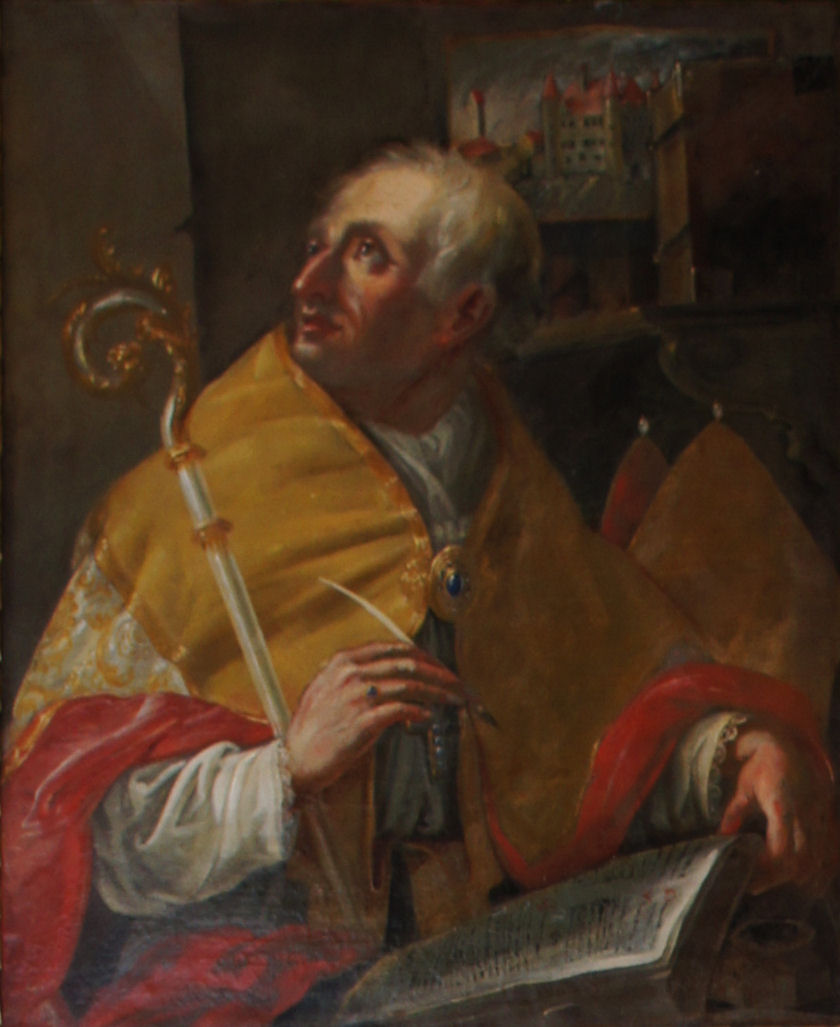Hitto Of Freising on:
[Wikipedia]
[Google]
[Amazon]
 Hitto of Freising (died 835) was the sixth
Hitto of Freising (died 835) was the sixth
 Hitto of Freising (died 835) was the sixth
Hitto of Freising (died 835) was the sixth Bishop
A bishop is an ordained clergy member who is entrusted with a position of authority and oversight in a religious institution.
In Christianity, bishops are normally responsible for the governance of dioceses. The role or office of bishop is ca ...
of Freising
Freising () is a university town in Bavaria, Germany, and the capital of the Freising ''Landkreis'' (district), with a population of about 50,000.
Location
Freising is the oldest town between Regensburg and Bolzano, and is located on the Is ...
from December 811 to 835.
He was descended from the Huosi
The Huosi were one of the ''Uradel'' (ancient noble families) in the duchy of Bavaria. Their status was enshrined in the '' Law of the Bavarians'', which lists them first among the five families having special rights privileges after the ducal Ag ...
family, part of the Bavarian upper aristocracy (''Hochadel''). In 794, the cleric became the deacon of Freising Cathedral
Freising Cathedral, also called Saint Mary and Corbinian Cathedral (German: Mariendom), is a romanesque basilica in Freising, Bavaria. It is the co-cathedral of the Catholic Archdiocese of Munich and Freising. Freising Cathedral is also known fo ...
and was frequently named as a witness in the Freising documents. He is first recorded as Bishop of Freising in 812, his predecessor, Atto, however, had died over a year earlier. During his time in office, the monk and notary, Kozroh, compiled the first Freising Book of Traditions (''Freisinger Traditionsbuch''), which went back to 744. Under Hitto, the Freising scriptorium
Scriptorium (), literally "a place for writing", is commonly used to refer to a room in medieval European monasteries devoted to the writing, copying and illuminating of manuscripts commonly handled by monastic scribes.
However, lay scribes and ...
reached a special high point; for example, about 40 codices
The codex (plural codices ) was the historical ancestor of the modern book. Instead of being composed of sheets of paper, it used sheets of vellum, papyrus, or other materials. The term ''codex'' is often used for ancient manuscript books, with ...
were written. In addition, over 300 documents from Hitto's time in office have survived. Hitto clearly strove to establish episcopal supremacy over the many, hitherto aristocratic, independent monasteries within the diocese (such as Schliersee Abbey in 817 Schäftlarn Abbey
Schäftlarn Abbey (Kloster Schäftlarn) is a Benedictine monastery on the Isar in Schäftlarn, south of Munich in Bavaria, Germany.
History
The monastery was founded in 762 by Waltrich, a priest of noble family, on his own land. The monaster ...
in 821 or 828, and Innichen Abbey
Innichen Abbey (German: ''Stift Innichen'') is a former Benedictine monastery in Innichen, South Tyrol in northern Italy. Founded in the 8th century, its collegiate church dedicated to Saint Candidus, rebuilt in the 12th–13th centuries, is consi ...
in 822). He was also the founder of Weihenstephan Abbey
Weihenstephan Abbey (''Kloster Weihenstephan'') was a Benedictine monastery in Weihenstephan, now part of the district of Freising, in Bavaria, Germany. Brauerei Weihenstephan, located at the monastery site since at least 1040, is said to be t ...
around 830. According to an old tradition, during his pilgrimage to Rome in 834 Hitto was given the relics of Saint Justin by Pope Gregory IV
Pope Gregory IV ( la, Gregorius IV; died 25 January 844) was the bishop of Rome and ruler of the Papal States from October 827 to his death. His pontificate was notable for the papacy’s attempts to intervene in the quarrels between Emperor Loui ...
, and brought them to Freising. Hitto was buried in the cathedral crypt at Freising; his sarcophagus is preserved. His nephew Erchanbert Erchempert ( la, Erchempertus) was a Benedictine monk of the Abbey of Monte Cassino in Italy in the final quarter of the ninth century. He chronicled a history of the Lombard Principality of Benevento
The Duchy of Benevento (after 774, Principa ...
became his successor.
Sources
*Theodor Bitterauf: ''Die Tradition des Hochstifts Freising.'' I, 1905, pp. 300–367. *Gertrud Diepolder: ''Freisinger Traditionen und Memorialeinträge im Salzburger Liber Vitae und im Reichenauer Verbrüderungsbuch. Auswertung der Parallelüberlieferung aus der Zeit der Bischöfe Hitto und Erchanbert von Freising.'' In: ''ZBLG.'' 58 (1995), pp. 147–190 9th-century bishops in Bavaria Roman Catholic bishops of Freising 8th-century births 835 deaths Baiuvarii {{Christianity-stub